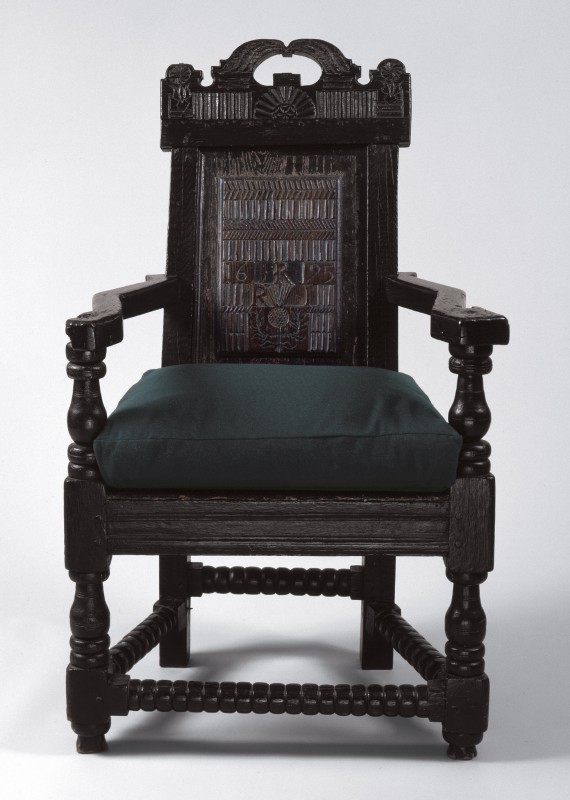
Armchair attributed to Robert Rhea (d. 1719), Monmouth County, New Jersey, 1695. White oak and yellow pine. H. 42 3/4", W. 25 1/4", D. 27 3/4". (Courtesy, Monmouth County Historical Association; gift of Mrs. J. Amory Haskell.)

Edward Evans, scrutoire, Philadelphia, Pennsylvania, 1707. Walnut with white cedar and white pine. H. 66 1/2", W. 44 1/2", D. 20". (Courtesy, Colonial Williamsburg Foundation.)

Detail of the “EDWARD EVANS 1707” mark stamped into the bottom of a drawer in the writing compartment of the scrutoire illustrated in fig. 2.
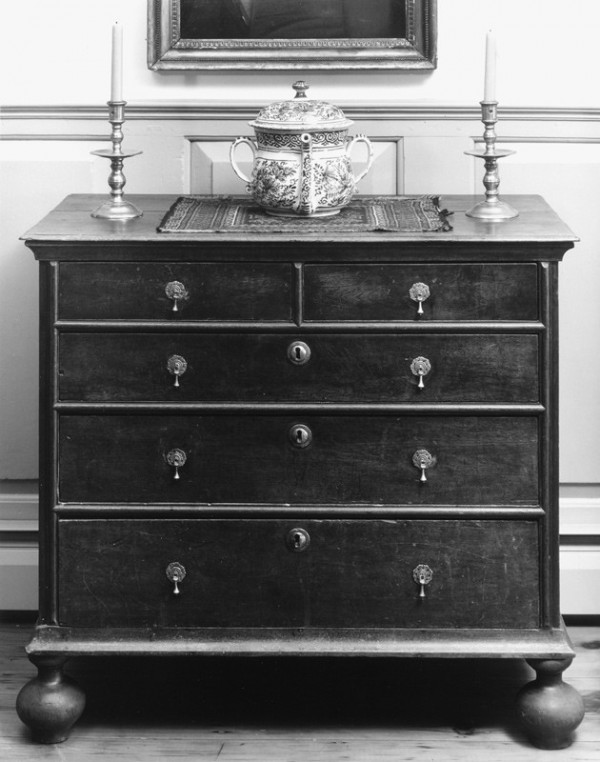
William Beake, chest of drawers, Philadelphia, Pennsylvania, 1711. Walnut with white cedar and pine. H. 36 3/4", W. 40 1/8", D. 22 1/8". (Collection of Joseph A. McFalls Jr.; photo, Decorative Arts Photographic Collection, Winterthur Museum.)

Detail showing the chalk inscription “William / Beake 1711” on the inside right case side of the chest illustrated in fig. 4.
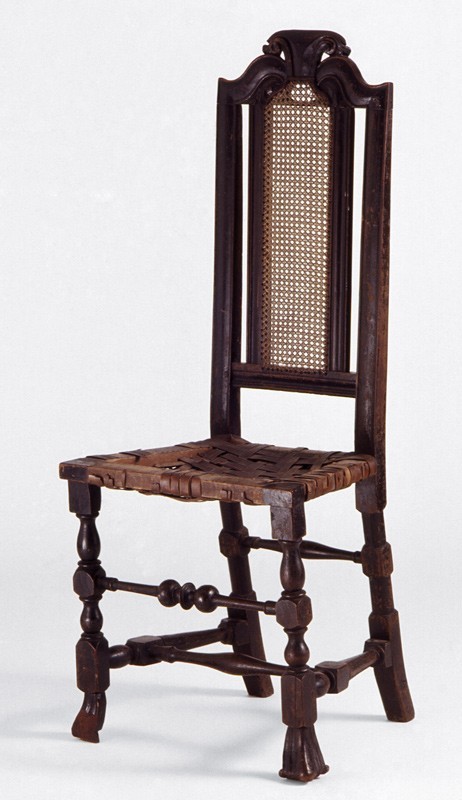
Caned side chair. Boston, Massachusetts, 1715–1730. Maple. H. 45 7/8", seat W. 17" (seat), D. 14 1/2". (Courtesy, Winterthur Museum.)
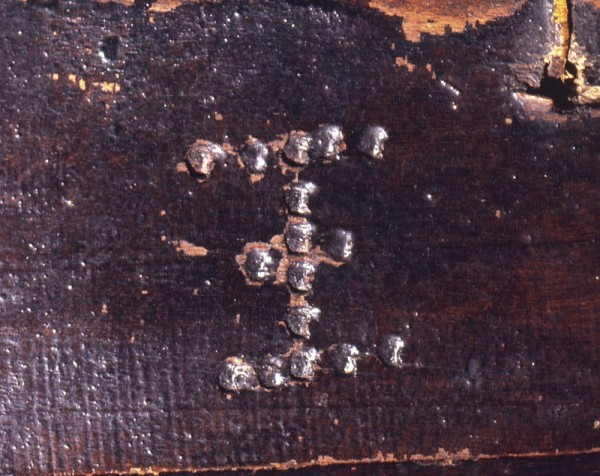
Punched “I” mark on the back of the stay rail of the chair illustrated in fig. 6.

William Savery, side chair, Philadelphia, Pennsylvania, after 1750. Maple with rush seat. H. 41", W. 21 3/8", D. 20 3/4". (Private collection; photo, Decorative Arts Photographic Collection, Winterthur Museum.)
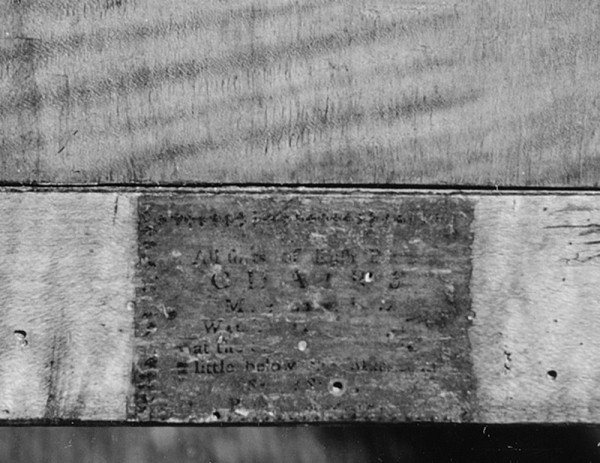
Printed label of William Savery (advertising rush-seat chairs) on the rear of the stay rail of the chair illustrated in fig. 8.
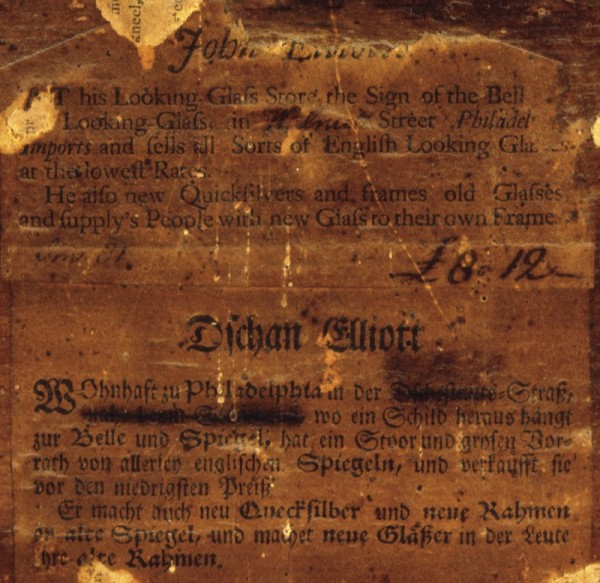
Printed two-part label of John Elliott with “Walnut” written over obliterated “Chestnut” Street address, ca. 1762. (Courtesy, Winterthur Museum.) This label is on a looking glass.
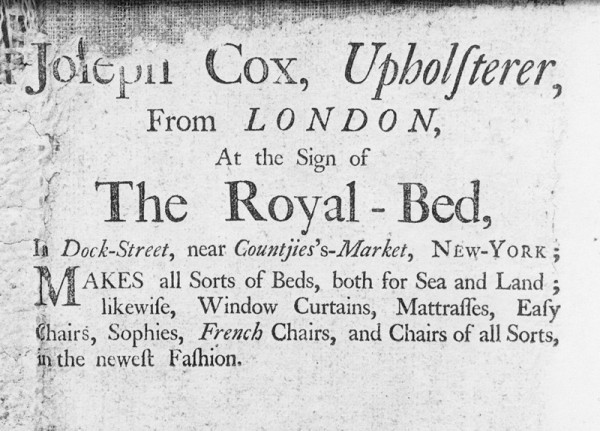
Printed label of Joseph Cox (active 1756–1773) originally pasted to the under upholstery of a New York sofa. (Courtesy, Metropolitan Museum of Art, gift of Mrs. John. J. Riker, 1932 [32.51.2]. Image © Metropolitan Museum of Art.)
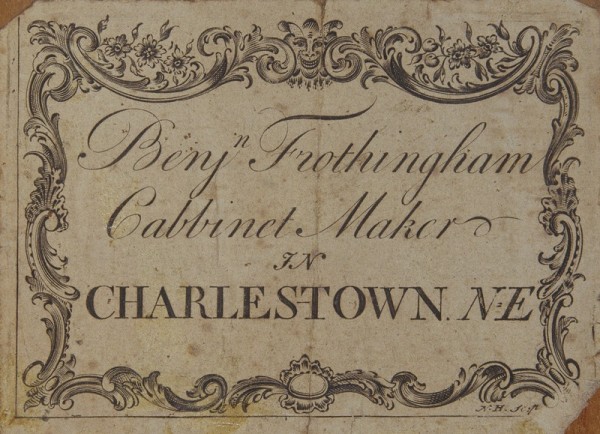
Printed label of Benjamin Frothingham. (Courtesy, Currier Museum of Art, Manchester, New Hampshire, gift of Mrs. Norwin S. Bean, 1967.2.) The label bears the initials of engraver Nathaniel Hurd. It is on the small interior drawer of a desk.
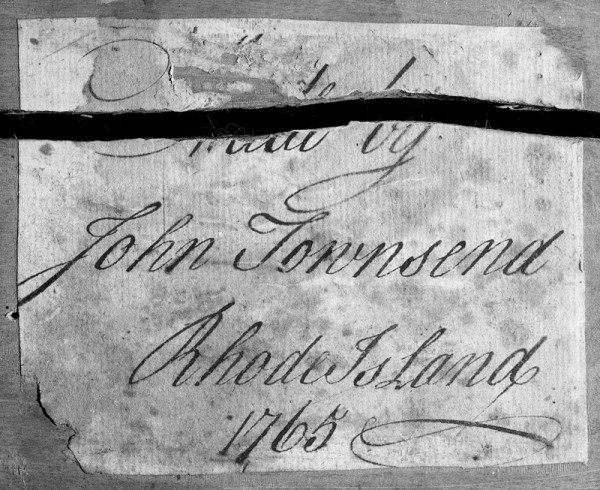
Paper label inscribed in ink “Made by/ John Townsend / Rhode Island / 1765” and applied to the inside of the top drawer of a four-drawer chest. (Courtesy, Metropolitan Museum of Art, Rogers Fund, 1927 [27.57.1]. Image © Metropolitan Museum of Art.)

Printed label of Charles Del Vecchio, New York, 1830. (Courtesy, Bernard & S. Dean Levy.) This label is on a looking glass.
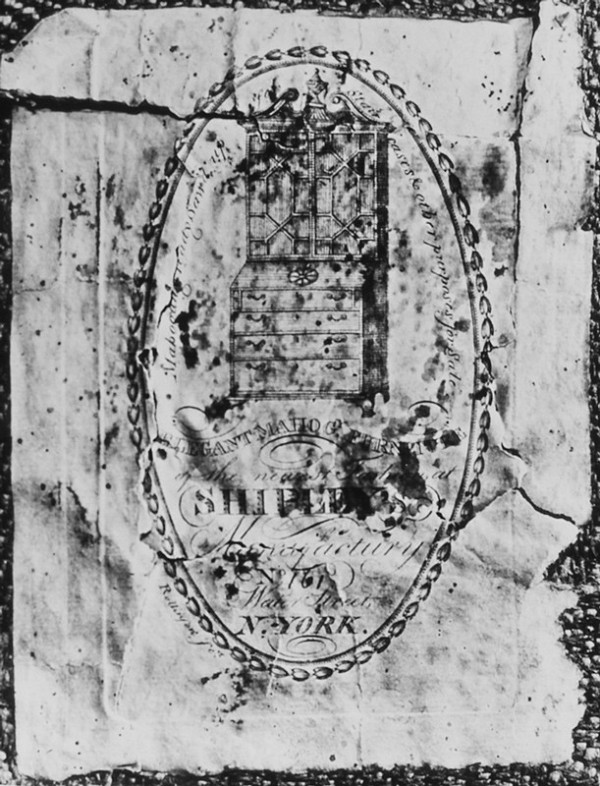
George Shipley label with engraved street address attached to the seat of an upholstered side chair. (Courtesy, Decorative Arts Photographic Collection, Winterthur Museum.)
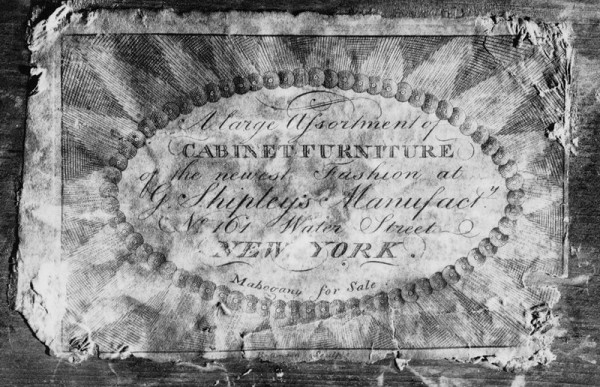
George Shipley label attached to a card table of probable Rhode Island origin. (Courtesy, Yale University Art Gallery, gift of Benjamin Hewitt in memory of Sarah and Attmore Tucker.)
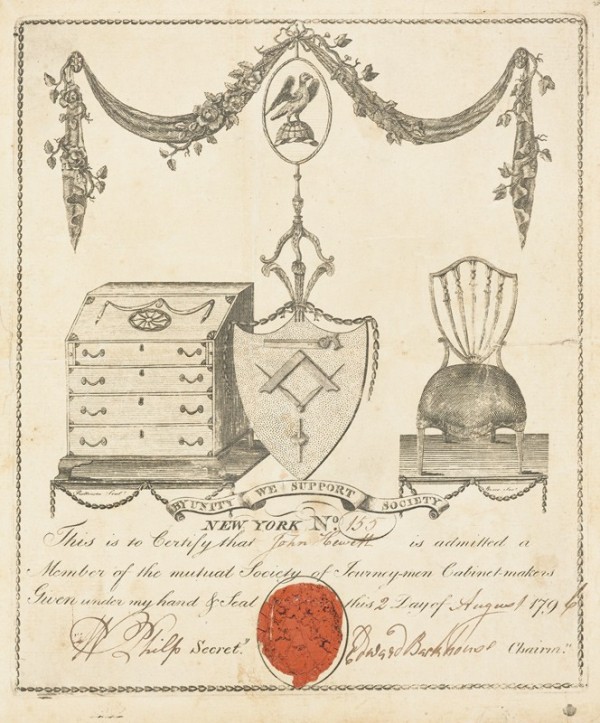
Certificate of John Hewett for membership in the Society of Journey-men Cabinet-makers in New York, 1796. (Gift of Cooper Union Library, 1953-10-80, Cooper-Hewitt, National Design Museum, Smithsonian Institution; photo, Matt Flynn.)
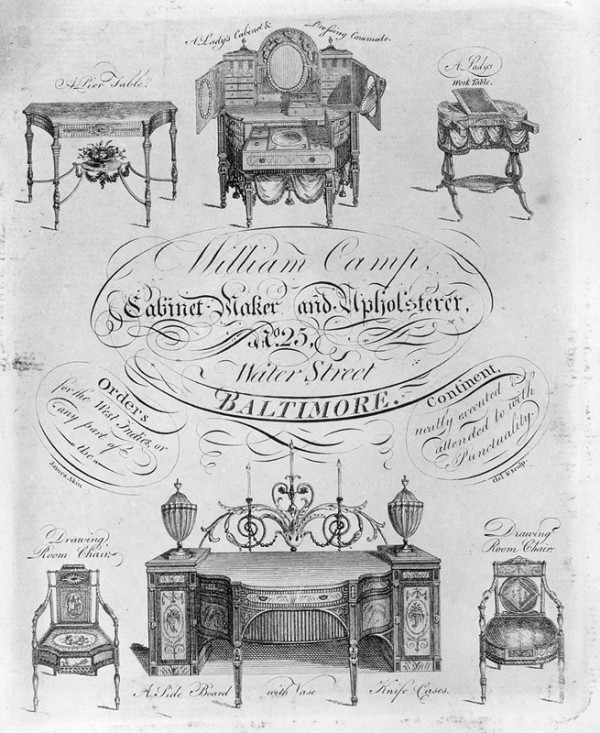
James Akin (American, 1773-1846.) William Camp Trade Card, ca. 1810. Engraving sheet: 6 5/8 x 5 3/16", Engraving plate: 5 9/16 x 4 7/16". (Courtesy, The Baltimore Museum of Art: Gift of Mrs. Francis White, from the Collection of Mrs. Miles White, Jr., BMA 1973.76.288; photo, Mitro Hood.)
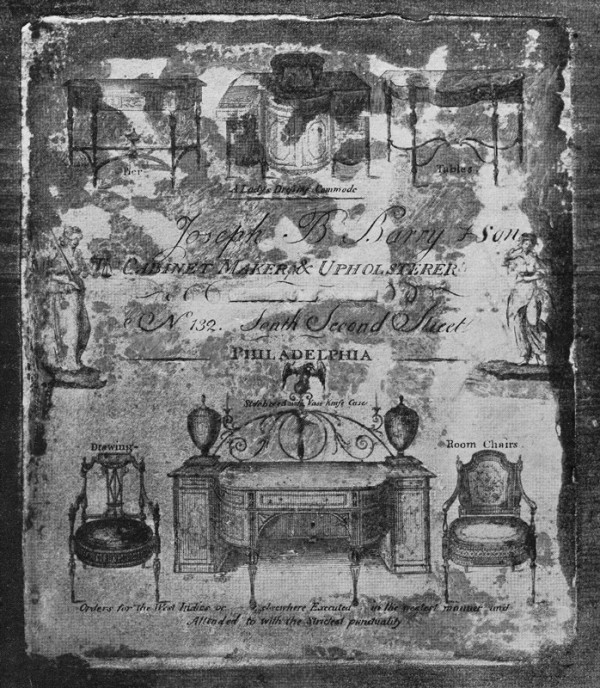
Label of Joseph B. Barry with “& Son” added. (Photo, Decorative Arts Photographic Collection, Winterthur Museum.)
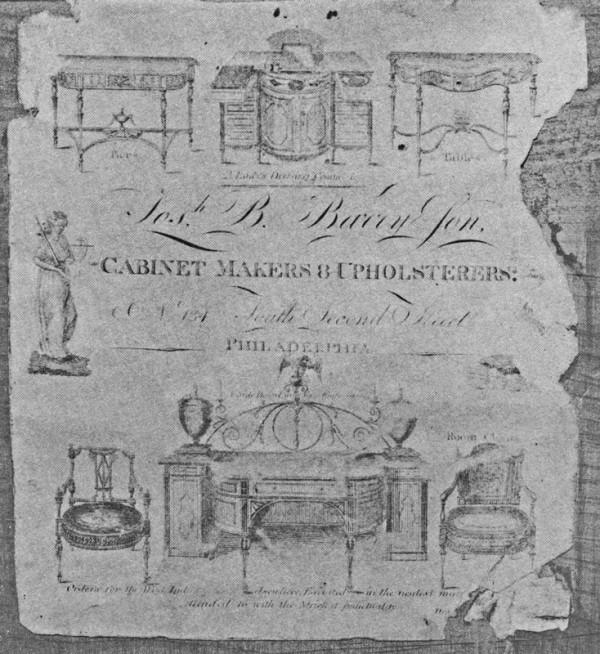
Label of Joseph B. Barry & Son. (Mrs. Charlton M. Theus, Savannah Furniture, 1735–1825 [Savannah, Ga.: privately printed, 1967], p. 85.) This label is later than the example illustrated in fig. 18.
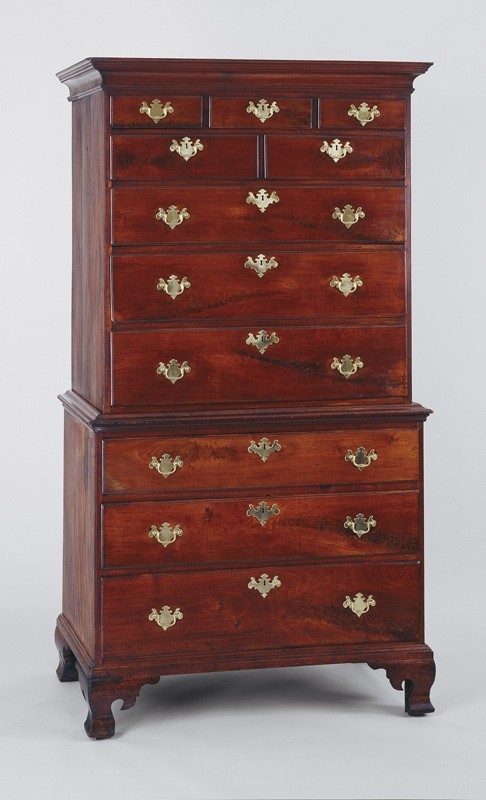
Chest-on-chest probably made by Caleb Byrnes, probably Stanton, Delaware, 1779. Walnut with tulip poplar, white cedar, and yellow pine. H. 80 1/2", W. 43 1/4", D. 23 3/4". (Courtesy, Sewell C. Biggs Museum of American Art.)

Inscription “C.B. April 16th / 1779” written in chalk on the inside bottom board of the lower case of the chest-on-chest illustrated in fig. 21.
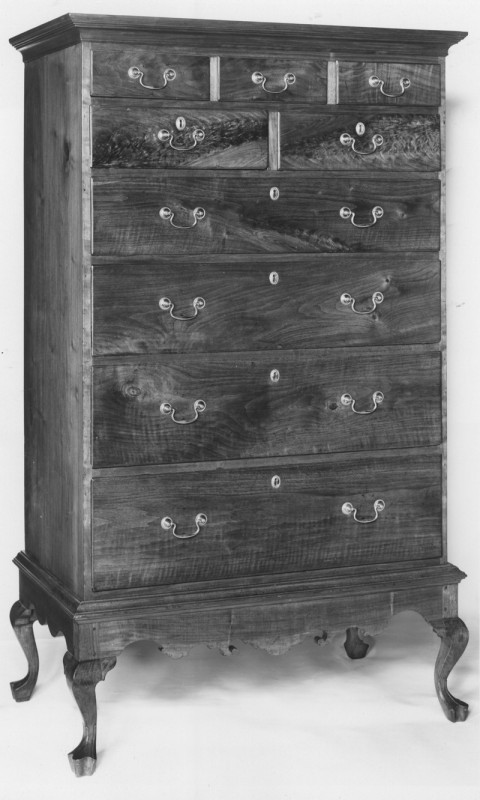
John W. Thomas, chest-on-frame, probably Kennett Square, Pennsylvania, 1805. Walnut with tulip poplar. H. 70", W. 41", D. 23 3/4". (Private collection.)
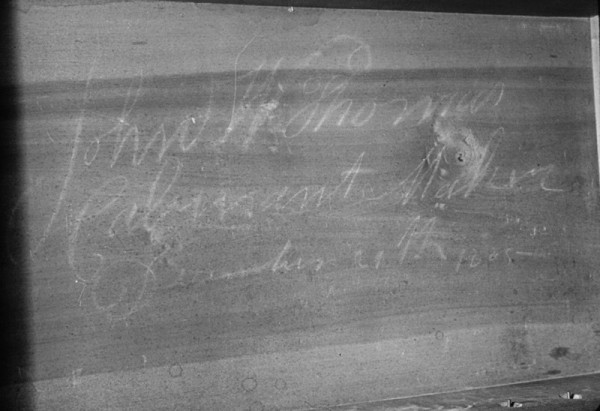
Chalk inscription “John W. Thomas / Cabinet Maker / December 27th 1805” on the inside bottom of the second-largest drawer of the chest-on-frame illustrated in fig. 23.
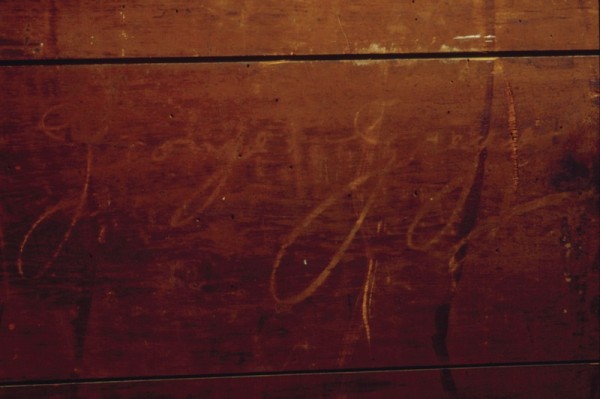
Chalk inscription “George Gregg” at the upper right corner of the backboards of the case of the chest-0n-frame illustrated in fig. 23.
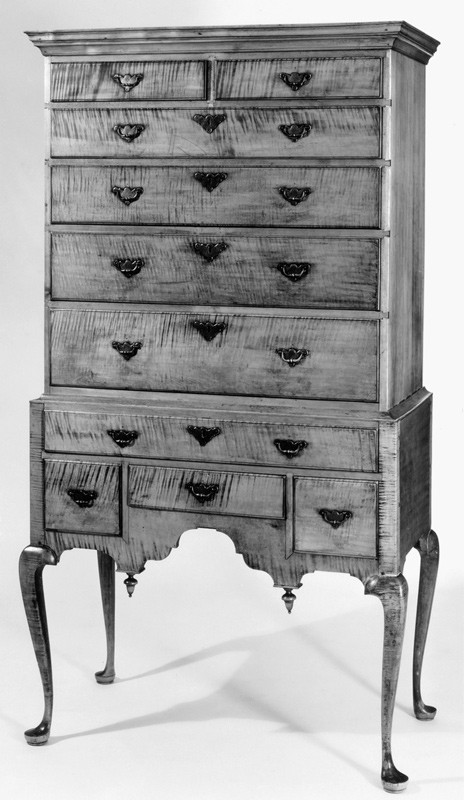
Moses Bayley and Joshua Morss, high chest, Newburyport, Massachusetts, 1749. Maple with white pine. H. 71", W. 36 1/2", D. 19 1/2". (Photo, Decorative Arts Photographic Collection, Winterthur Museum.)
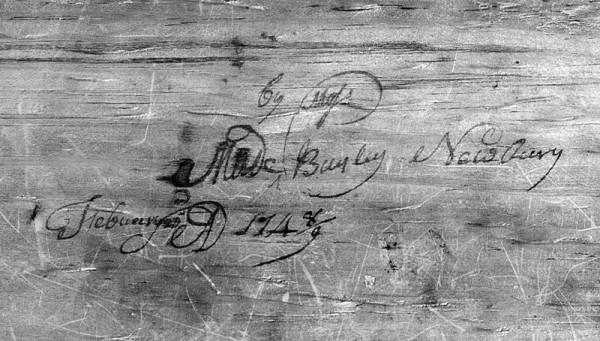
Inscription “Made by Moses Bayley Newbury / February AD 1748/9” in the upper case of the high chest illustrated in fig. 26. Bayley signed the upper case twice.
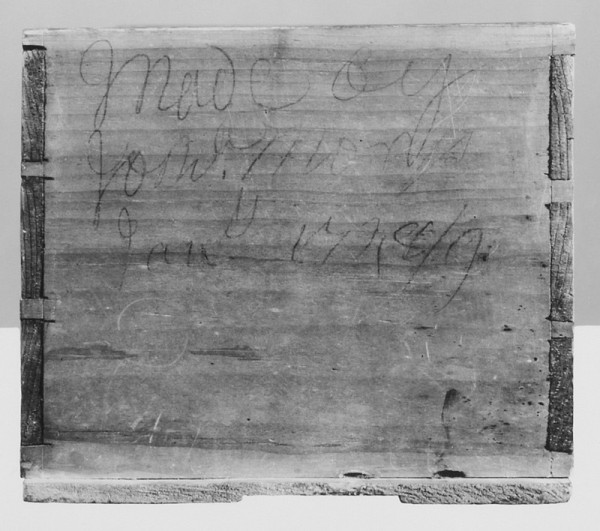
Inscription “Made by / Josha Morss / Jany 1748/9” on the back of a lower case drawer of the high chest illustrated in fig. 26. Morss signed the lower case twice.
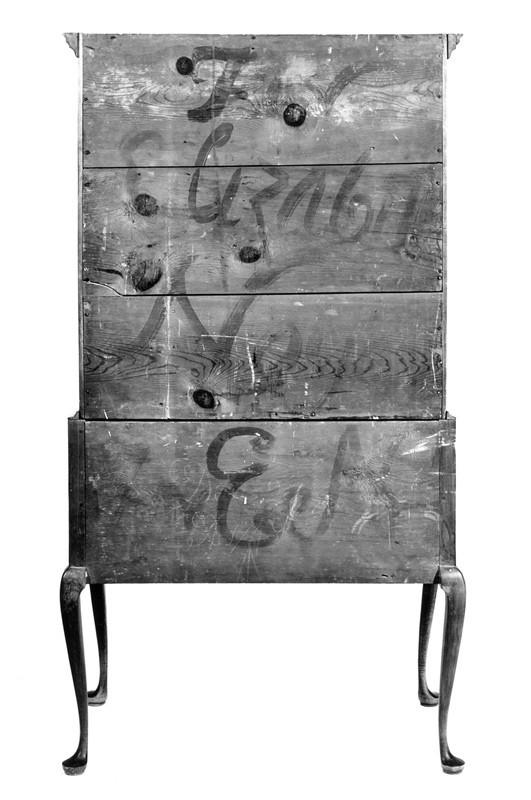
Painted inscription “For / Elizabeth / Noyes / E N” crossing the back of both cases of the high chest illustrated in fig. 26.
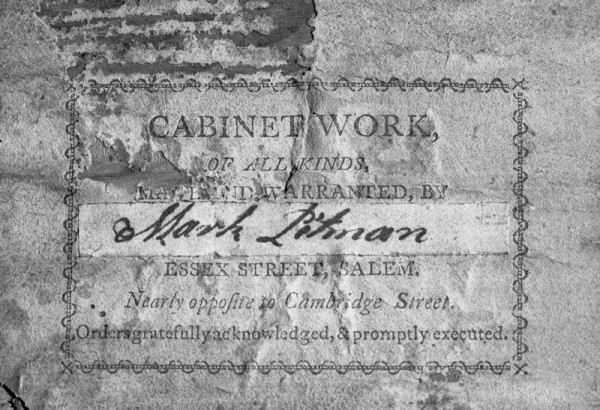
Printed label for Josiah Caldwell with a small piece of paper bearing the handwritten name “Mark Pitman.” (Courtesy, Winterthur Museum.) This label is on a mahogany serving table or “enclosed pier table.”

Desk-and-bookcase, probably northeastern Massachusetts, 1799. Maple with white pine. H. 100 1/2", W. 45", D. 24 3/4". (Courtesy, Currier Museum of Art, Manchester, New Hampshire; Museum Purchase, 1958.6.)
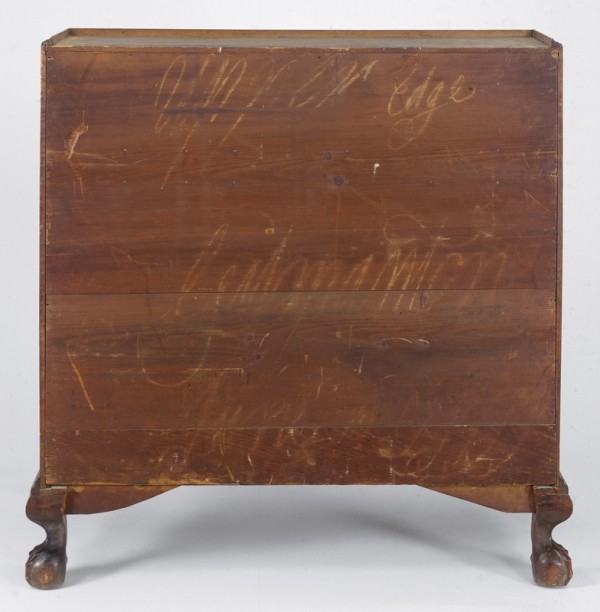
Chalk inscription “Upper Edge” on the lower case backboards of the desk-and-bookcase illustrated in fig. 31. This same inscription is on a northeastern Massachusetts secretary-and-bookcase also marked “Gilmanton” (New Hampshire) and dated June 5, 1799.
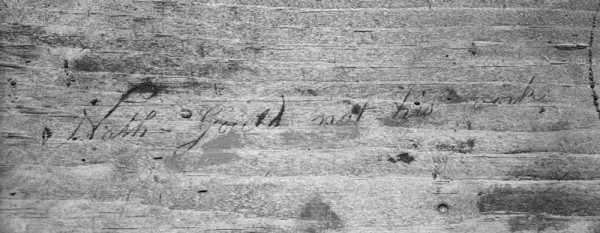
Incised inscription “Nath Gould not his work” on the top board of the lower section of a mahogany desk-and-bookcase made in Salem. (Courtesy, Metropolitan Museum of Art, gift of Mrs. Russell Sage, 1909 [10.125.81]. Image © Metropolitan Museum of Art.)

William Fisk and Thomas Wightman, swivel-top Grecian card table, Boston, Massachusetts, 1817–1825. Mahogany with white pine. H. 29 1/2", W. 36 1/2", D. 18". (Courtesy, Historic New England, museum purchase with funds provided by an anonymous gift, 2005.26; photo, David Carmack.)
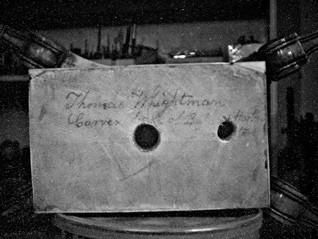
Ink inscription “Thomas Whightman / Carver back of [illegible] Horton’s [?]” on the card table illustrated in fig. 34.
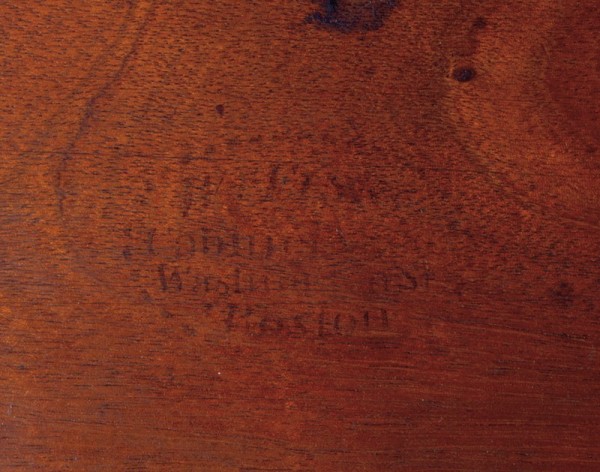
Stencil mark of William Fisk of Boston inside the well under the folding top of the card table illustrated in fig. 34.
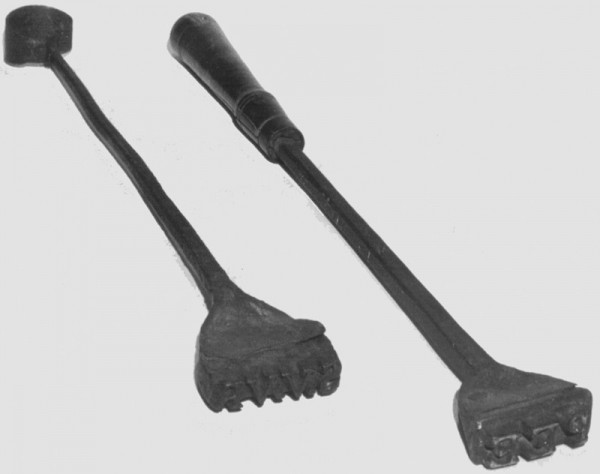
Branding or marking irons of owners Peter Elmendorf II and Solomon Van Vechten Van Rensselaer, Albany area, New York, late eighteenth century. Iron with cast copper letters. L. 19". (Courtesy, Historic Cherry Hill Collections, Albany, NY.)

Side chair, England, 1725–1750. Walnut. H. 39 3/8", W. 22 1/2", D. 21 3/4". (Private collection; photo, Philip Zimmerman.)
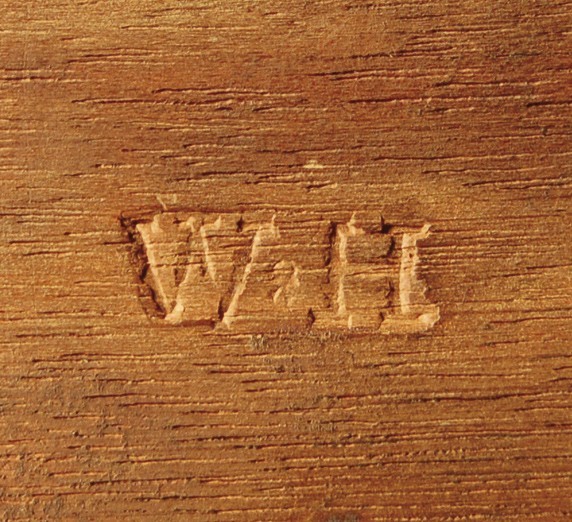
Stamped mark “WH” on the bottom of the rear rail of the chair illustrated in fig. 38.
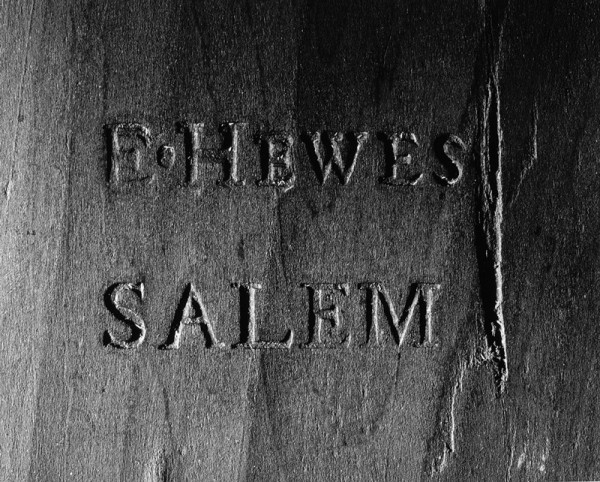
Stamp “E[zekian] · HEWES / SALEM” on the bottom of a fanback Windsor side chair. (Private collection; photo, Decorative Arts Photographic Collection, Winterthur Museum.)

Joseph Birdsey Jr., sack-back Windsor armchair, Huntington, Connecticut, 1790–1800. Maple, basswood, oak, and hickory. H. 36", W. 24 3/4", D. 20 1/2". (Private collection; photo, Philip Zimmerman.)
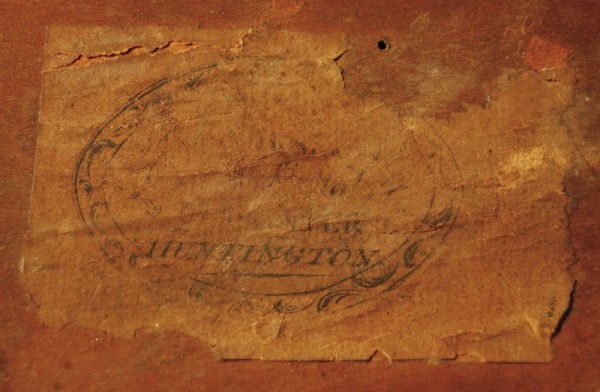
Paper label of Joseph Birdsey Jr. (1769–1805) of Huntington, Connecticut, pasted to the seat bottom of the armchair illustrated in fig. 41.

Paper label and initial die stamps of Edward James (d. 1798) on the inside backboard of a mahogany tall clock case. (Courtesy, Philadelphia Museum of Art, purchased with the Germantown Tribute Fund, 1931.)
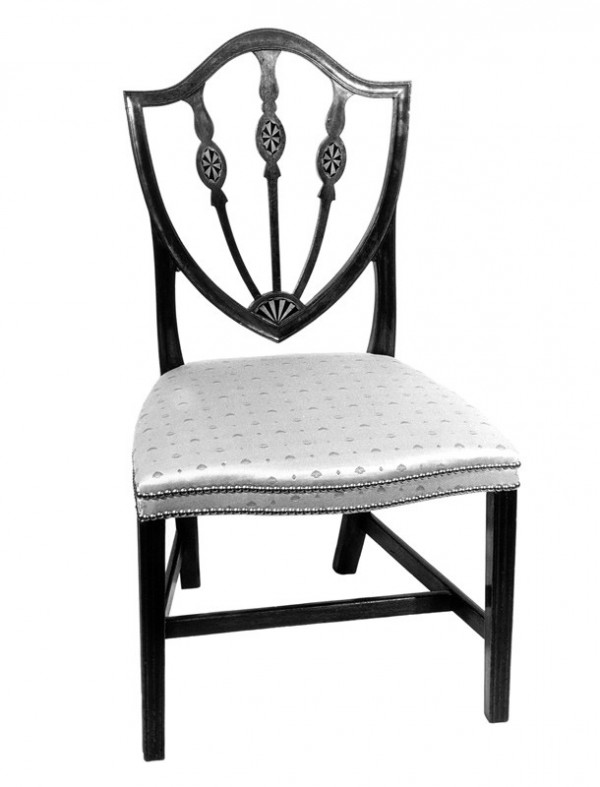
Side chair, attributed to the partnership of Samuel Fisk and William Fisk, Boston, Massachusetts, 1791–1797. Dimensions not recorded. (Courtesy, David Dunton; photo, Decorative Arts Photographic Collection, Winterthur Museum.)
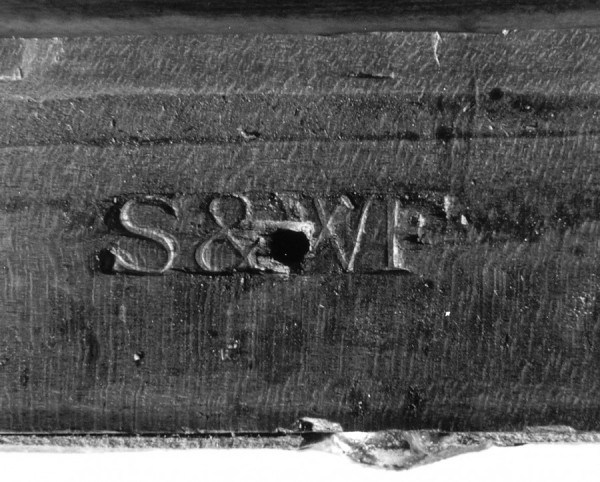
Stamp “S & WF” on the rear rail of the chair illustrated in fig. 44.
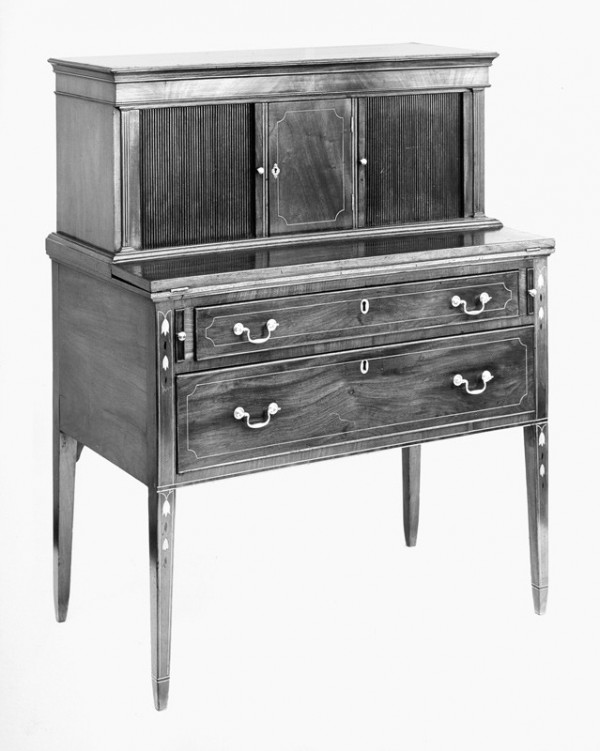
Tambour desk attributed to Elijah Sanderson, Salem, Massachusetts, 1800–1810. Mahogany with white pine. H. 47 1/2", W. 37", D. 20 1/2". (Private collection; photo, Decorative Arts Photographic Collection, Winterthur Museum.)
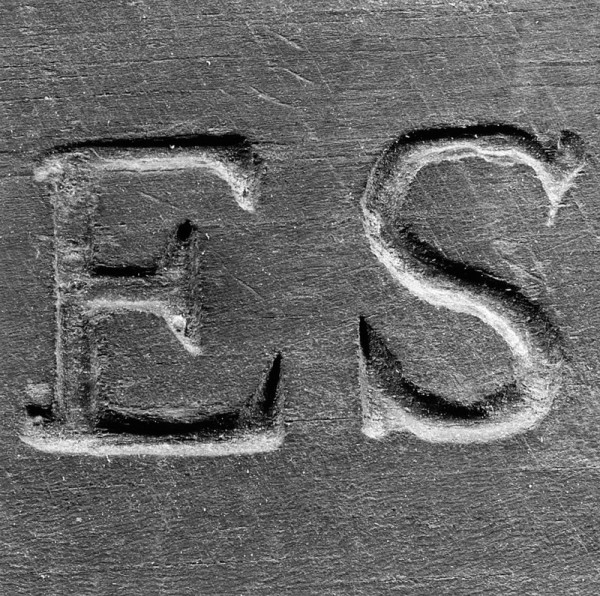
Stamp “ES” on the desk illustrated in fig. 46.
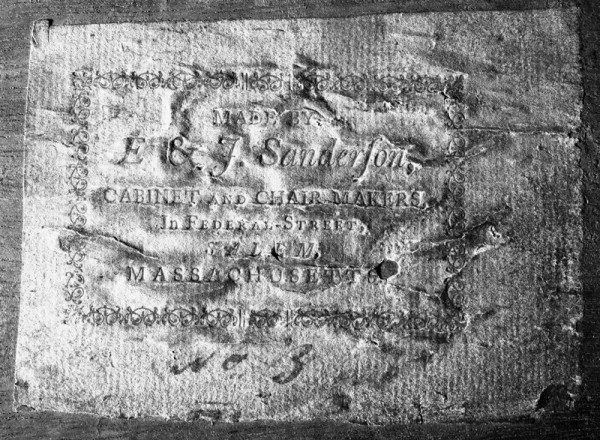
One of four paper labels of Elijah and Jacob Sanderson pasted to the underside of the top (one) and the skirt rails (three) of a Marlborough-leg breakfast table. (Courtesy, Winterthur Museum.)
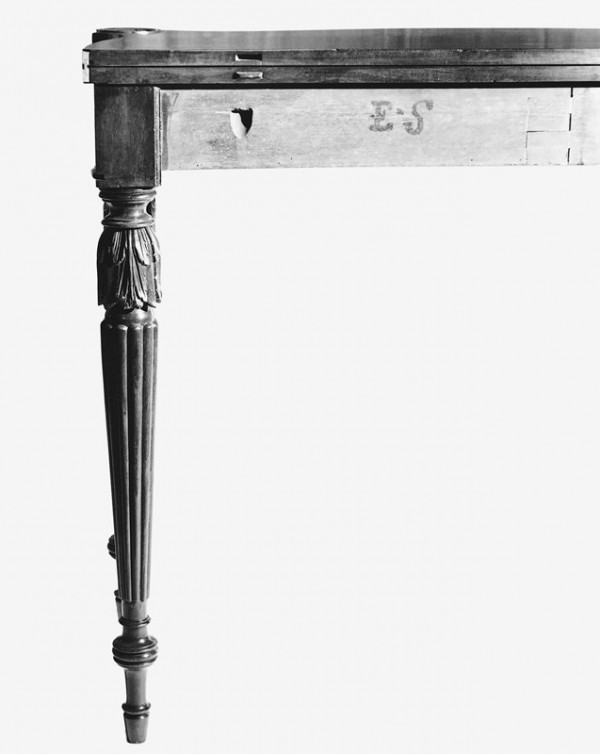
Painted initials on the stationary rear rail of a Salem-area card table, possibly by Elijah Sanderson. (Private collection; photo, Museum of Early Southern Decorative Arts, Old Salem Museums and Gardens.)

Desk-and-bookcase, Salem, Massachusetts, 1795–1805. Mahogany with white pine. H. 101 1/2", W. 46", D. 26 1/2". (Private collection; photo, Ali Elai, Camerarts.) This object is marked “JS,” probably for Jacob Sanderson (1757–1810).
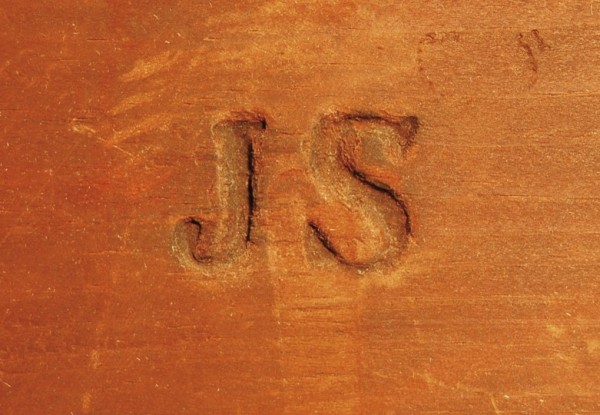
Impressed mark “JS” on the center of the outer lower case of the desk-and-bookcase illustrated in fig. 50. (Private collection; photo, Philip Zimmerman.)
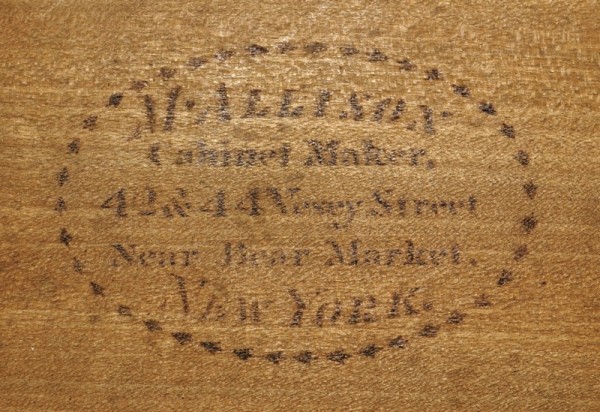
Stencil mark of Michael Allison. (Courtesy, New York State Museum.) This mark is on a mahogany chest of drawers.
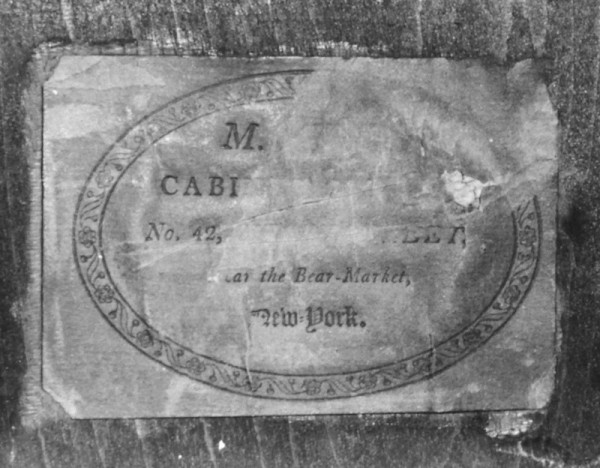
Printed paper label of Michael Allison from a chest of drawers. (Courtesy, Newark Museum; photo, Decorative Arts Photographic Collection, Winterthur Museum.)
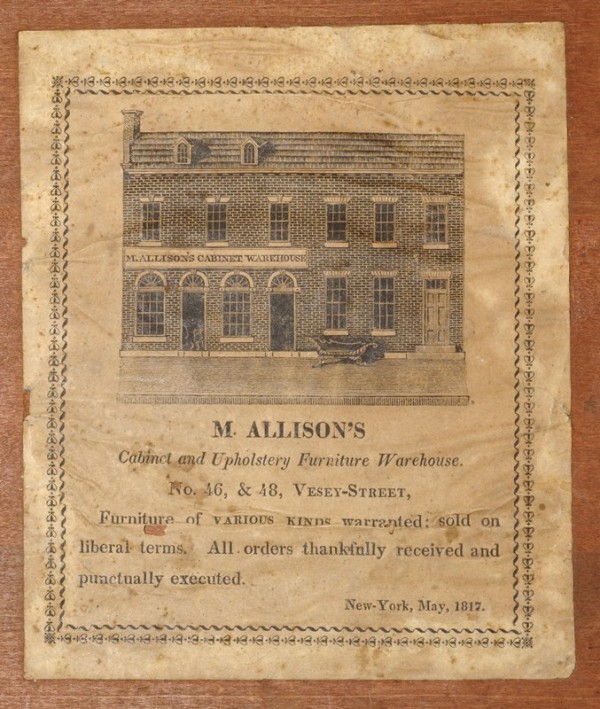
Printed paper label of Michael Allison dated May 1817. (Courtesy, New York State Museum.) This label is on a mahogany sideboard.
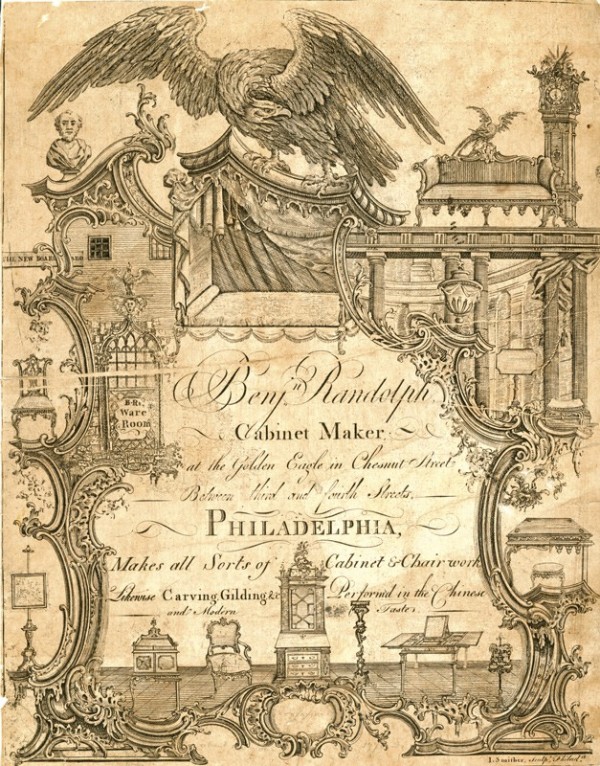
Printed paper trade card of Benjamin Randolph. (Courtesy, Library Company of Philadelphia.)
